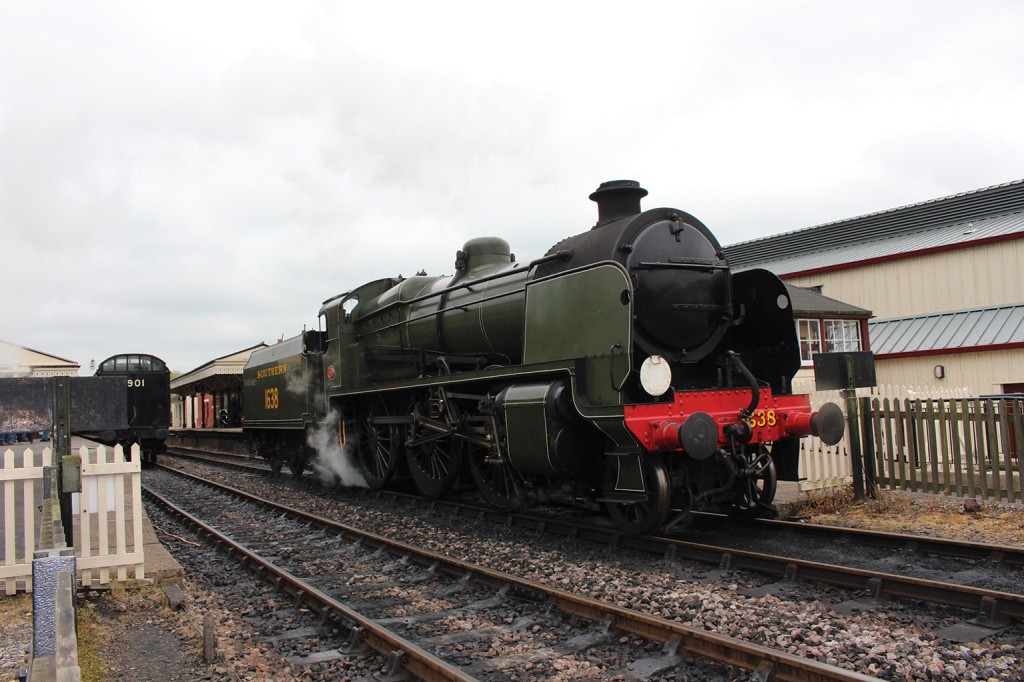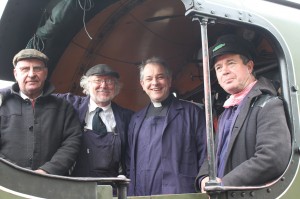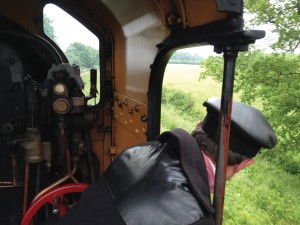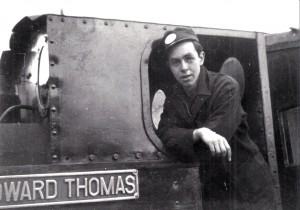
All my whole life I have adored steam locomotives: the drama of their scale and speed, the smell and whoosh of steam and the characters of the different engines.
You will remember the classic Ealing film ‘The Titfield Thunderbolt’, in which Sam, the vicar, becomes the engine driver in an attempt to save the line from closure. When someone has the temerity to exclaim that the Canterbury Line has closed, Sam responds reverentially: “Perhaps there was insufficient faith in Canterbury.” Well, there was sufficient faith on the Bluebell Line. The Bluebell Railway was the first standard gauge preservation railway in the world. Work on it began in earnest in 1961. 2013 saw the completion of the massive extension to connect the Bluebell Railway with East Grinstead and mainline Network Rail services. It was an extraordinary achievement, involving teams of volunteers and huge capital investment.



I have been invited to ride on the footplate of this magnificent Southern Railways U class 2-6-0 mogul steam locomotive by Ann Hatherill. Designed by Richard Maunsell for passenger duties on the Southern Railway, fifty U class locomotives were built between 1928 and 1931. Four of these engines have survived.
I can barely contain my excitement as I stand in my ‘dog collar’, bib and jacket on the platform of Sheffield Park Station. I am introduced to Steve Squire, the driver, who invites me on to the footplate. I explain how I come to be with him on this grey, late spring afternoon in May. I was blessed to take the funeral of a railway design engineer and model engineer, Gordon Hatherill. I have been friends with Gordon’s family for many years. Gordon volunteered on the pioneering Talyllyn Railway in North Wales during the 1950s and 1960s. Railways are romantic places. Gordon and Ann met on the Talyllyn as volunteer firemen and were married in 1965. Ann, wanting to thank me and mark our friendship, has arranged for me to be standing on this footplate. Steve nods with an understanding smile and we are joined by fireman Bruce Steer and cleaner and trainee fireman David Tandy.
Bruce begins to shovel coal into the enormous firebox in preparation for the off. “You always have to anticipate when more power will be needed and make sure that the fire burns evenly,” he says. The shovel scrapes against coal dust and steel with a gravelly note emerging from the laden tender. With an easy swing, each shovelful of coal is distributed across the fire. Bruce explains: “It’s the fireman who balances water against the demand for steam and heat.” Steve watches for the guard’s signal and smoothly the locomotive pulls out of Sheffield Park as he nudges levers. Underway, I ask Steve what it is that he most enjoys about driving a locomotive. He thinks for a moment and replies, “Their foibles – each has a different character.” This U class 2-6-0 mogul steam locomotive, to my eye, appears to have fine lines and proportion. Steve agrees, saying: “This is a lovely engine to drive. It’s workmanlike and epitomises steam. It’s a nice environment for the crew, which isn’t the case with all engines.”
Some of the gradients are steep for steam and, in anticipation, David is stoking the fire before we reach them. He grins and says, “Nothing beats this job!” There is an obvious delight in working on the footplate. As the train begins to pull harder uphill, the fire flashes in time with each turn of its wheels and expulsion of steam. It is important that both fireman and driver know their line.
As we approach Horsted Keynes station, Bruce dampens the fire with primary air to cool it. After a brief halt, we journey up the line to the tunnel. We all stand under the shelter of the cab, our faces illuminated by the light of the fire. David strains his gaze towards the water and pressure gauges by the light of an ancient torch, checking they are balanced on this gradient. I look out at the tunnel and glimpse the bricks in its arch rushing by. As we emerge into daylight, Steve sounds the whistle and we journey onwards towards Kingscote and East Grinstead stations.
I am struck by the excitement of pulling in to East Grinstead alongside a modern Southern electric train and it seems to echo that marvellous moment at the end of ‘The Titfield Thunderbolt’ when all the train whistles are blown in celebration of passing the railway inspector’s tests.
As we make the return journey, Steve talks about his love of the landscape and the changing seasons. He recounts, “On a return journey last winter, we got covered in snow. It still hadn’t melted from my overalls by the time I got home!”
Travelling in reverse now, the wind is in our faces and, with the noise and smell of steam and the shovelling coal, we all feel truly alive, like this dear old locomotive. The countryside opens up as we puff through copse and fields, where cattle graze seemingly unaffected by the passage of our train. The landscape flashes by. Although we are only travelling at 25mph, it seems much faster. We pass through Kingscote, the tunnel, Horsted Keynes and on to Sheffield Park. It is apparent that there is great camaraderie on this footplate, a shared joy in the locomotives and the Bluebell Line. I feel deeply grateful to have shared this journey with them. My thanks go to Ann and all at the Bluebell Railway, whose passion and hard work keep this remarkable railway running.
The Bluebell Railway is always delighted to welcome visitors, new volunteers and friends. There is a lively program of events, often with visiting engines, though the line has one of the best collections of locomotives and rolling stock in the country. To find out more and check out the timetables, go to www.bluebell-railway.com.
By Revd. Rupert Toovey. Originally published on 18th June 2014 in the West Sussex Gazette.